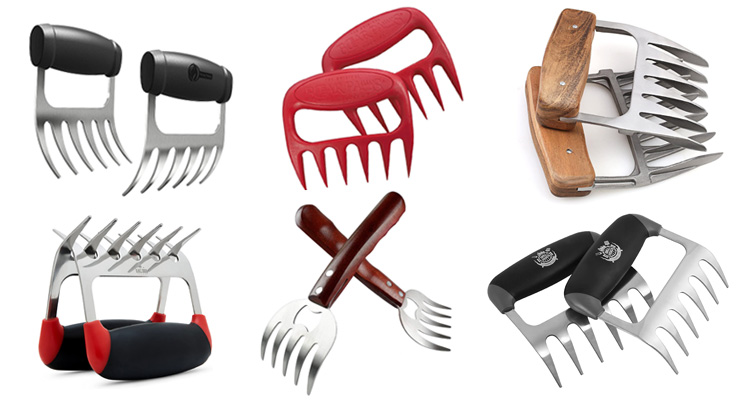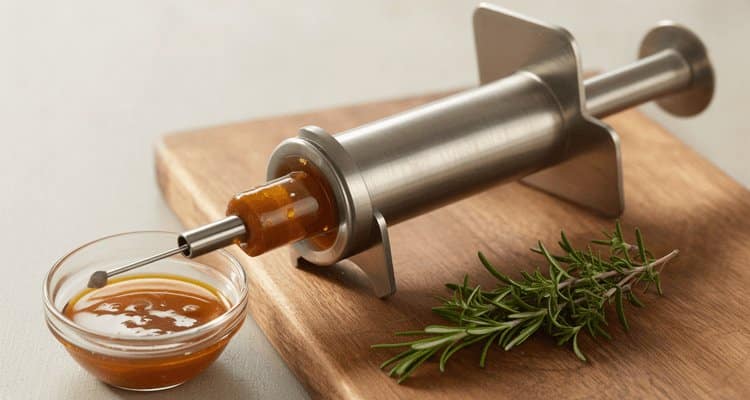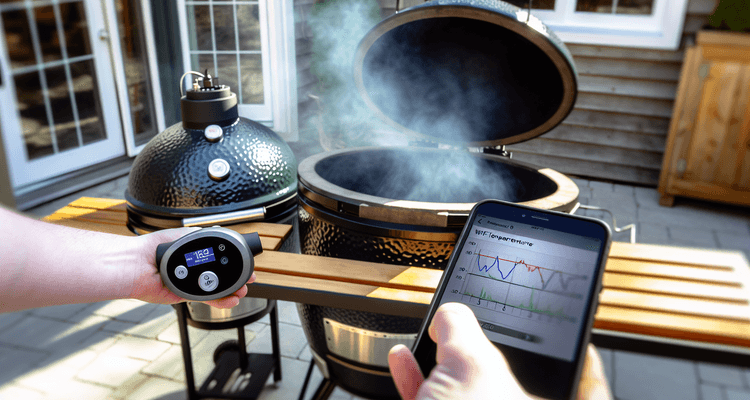
Maintaining precise temperature control during low-and-slow BBQ sessions can feel like a full-time job. One moment you’re at the perfect 225°F, the next you’re battling temperature swings that threaten hours of careful cooking. BBQ temperature controllers eliminate this constant vigilance by automatically regulating airflow to your smoker or grill, maintaining rock-solid temperatures for hours—even overnight. Whether you’re smoking brisket, ribs, or pulled pork, these devices give you the freedom to focus on other tasks while delivering consistently exceptional results. In this comprehensive guide, we’ll explore the best BBQ temperature controllers available in 2025, helping you find the perfect automated solution for stress-free smoking.
Quick Roundup List
- Best Overall: INKBIRD ISC-027BW WiFi
- Best for Kamado: Flame Boss 500 Kamado WiFi
- Best Versatile: Flame Boss 500 Universal WiFi
- Best Budget WiFi: Flame Boss 400 WiFi
- Best Budget: BBQ Guru CyberQ WiFi
- Best Cloud Features: BBQ Guru CyberQ Cloud
Why BBQ Temperature Control Matters
The science of low-and-slow cooking demands consistent temperatures over extended periods. When smoking a brisket for 12-16 hours, temperature fluctuations of even 25-30 degrees can dramatically affect the final result. Too hot and you risk drying out the meat or rendering fat too quickly. Too cool and collagen won’t break down properly, leaving you with tough, chewy results.
Traditional charcoal and wood smoking requires constant attention—adjusting vents, adding fuel, monitoring weather changes. Even experienced pitmasters struggle to maintain perfect temperature stability, especially during overnight cooks or when weather conditions shift unexpectedly.
Automatic BBQ temperature controllers solve this problem by creating a feedback loop between temperature sensors and airflow management. These automatic temperature control systems deliver stability within 5-10 degrees of your target for the entire cook, regardless of fuel type, weather conditions, or how many times you peek inside.
Beyond consistency, temperature controllers offer practical benefits that transform the smoking experience. You can sleep through overnight brisket cooks, run errands during a pork shoulder session, or entertain guests without constantly checking your pit. For competition BBQ teams and serious enthusiasts, WiFi-enabled controllers provide real-time temperature data and alerts from anywhere, ensuring nothing goes wrong even when you’re not standing beside the smoker.
How Temperature Controllers Work
At its core, a BBQ temperature controller uses three essential components: a temperature probe, a control unit with processing logic, and an air delivery system (typically a fan or damper mechanism). Understanding this system helps you appreciate why these devices are so effective at maintaining stable cooking temperatures.
The temperature probe monitors your smoker’s internal temperature, sending continuous readings to the control unit. This pit probe typically mounts near the cooking grate, measuring ambient temperature in the cooking chamber rather than inside the meat. Most controllers also include additional food probes to monitor internal meat temperatures simultaneously.
The control unit acts as the brain of the system, processing temperature data and making real-time decisions about airflow adjustments. When the controller detects temperatures dropping below your target, it activates the fan to force more oxygen into the firebox. This increased oxygen feeds the fire, raising the temperature. Once the target temperature is reached, the fan either shuts off or reduces to a maintenance level, allowing the fire to stabilize.
Variable-speed fans represent a significant advancement over simple on/off blowers. Rather than blasting air at full power every time the temperature dips, variable-speed units make subtle adjustments—ramping fan speed up gradually as needed and backing off gently as temperature approaches the target. This creates smoother temperature curves without the dramatic spikes associated with aggressive airflow changes.
Modern WiFi temperature controllers add connectivity to this equation, streaming temperature data to smartphone apps and allowing you to adjust target temperatures remotely. Cloud-based models can even log your entire cook, creating temperature graphs you can review later to improve your technique. Many include features like open-lid detection, which prevents the fan from overreacting when you briefly open the smoker to spritz or check your food.
Types of BBQ Temperature Controllers
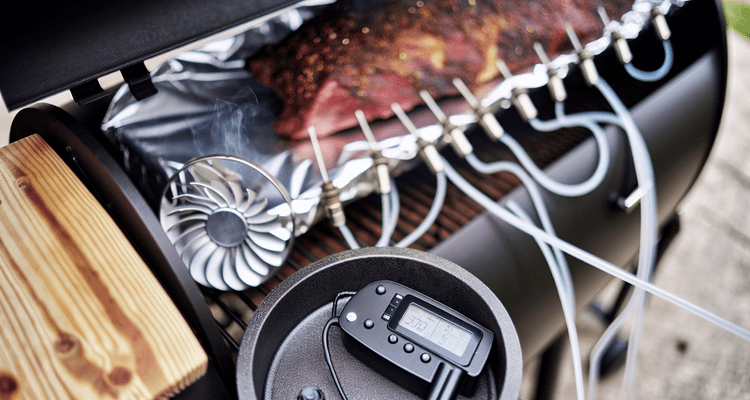
Understanding the different approaches to automated temperature control helps you choose the right system for your setup. While all controllers share the same goal—maintaining steady temperatures—they achieve it through different mechanical systems and connectivity options.
Fan-based controllers represent the most common type, using an electric blower to force air into your smoker’s firebox. Variable-speed fans make gradual adjustments for smooth temperature curves, while simpler on/off fans cycle between full power and off. Variable-speed units generally provide tighter temperature control, but on/off fans work perfectly well for most smoking applications and often cost less.
Damper-based controllers take a different approach, using a motorized damper or servo to open and close your cooker’s air intake. Rather than forcing air in, these systems control the natural draft by adjusting the intake opening. Damper systems consume less power than fan-based units and create a more natural fire behavior, but they work best on cookers with good natural draft and may struggle in cold or windy conditions.
WiFi-enabled vs Bluetooth controllers differ primarily in range and connectivity. WiFi models connect to your home network, allowing monitoring from anywhere with internet access—even when you’re miles away. Bluetooth controllers offer shorter range (typically 100-300 feet), but provide simpler setup with direct phone-to-controller connection. For most backyard applications where you’re staying home during the cook, Bluetooth proves sufficient. WiFi shines for overnight cooks when you’re sleeping in a different part of the house, or when you need to run errands during a long smoking session.
Standalone vs smartphone-dependent units represent another key distinction. Standalone controllers include an onboard display and physical controls, functioning completely independently of smartphones. Smartphone-dependent models eliminate the display, relying entirely on app control. While this reduces cost and simplifies the hardware, it means you need your phone nearby to check temperatures or make adjustments. Consider whether you prefer glancing at a physical display or pulling out your phone to check status.
How to Choose the Best BBQ Temperature Controller
Compatibility with Your Grill or Smoker: Before purchasing, verify the controller will work with your specific cooker. Kamado grills need controllers with appropriate mounting hardware and algorithms tuned for ceramic cookers’ thermal properties. Offset smokers and cabinet smokers typically work with universal controllers, but check that the fan can deliver adequate airflow for your firebox size. Some manufacturers sell cooker-specific kits that simplify installation significantly.
Number of Probes Needed: Consider how many items you typically cook simultaneously. At minimum, you need one pit probe for temperature control. Add food probes if you frequently cook multiple different meats, monitor different areas of large cuts, or want to track both meat and ambient pit temperature. Controllers supporting 3-4 probes provide maximum flexibility for complex cooks.
WiFi, Bluetooth, or RF Wireless: WiFi provides unlimited range through your home network and internet connectivity, ideal for overnight cooks or when you might leave home. Bluetooth offers 100-300 foot range with simpler setup and no network dependency—sufficient for most users who stay nearby during cooks. RF wireless (radio frequency) falls between these options, offering several hundred feet range without WiFi networks but requiring a dedicated receiver.
Fan Quality and CFM Rating: Variable-speed fans provide smoother temperature control than simple on/off models, though both approaches work effectively. Pay attention to CFM (cubic feet per minute) ratings—larger smokers and offset cookers need more airflow (12+ CFM) to maintain control, while kamado grills work well with smaller fans (6-10 CFM) due to their efficient design.
Build Quality and Weather Resistance: Controllers live outdoors exposed to heat, smoke, and weather. Look for sealed electronics, weather-resistant housings, and high-temperature probes rated well above your maximum cooking temperature. Fan units should include screens to prevent debris from entering the blower mechanism. Quality controllers last for years of regular use.
App Features and Usability: If you’re investing in WiFi or Bluetooth connectivity, evaluate the companion app carefully. Look for intuitive interfaces, reliable connectivity, temperature graphing, customizable alerts, and data logging. Reading user reviews specifically about app stability and usability can reveal problems not apparent from marketing materials.
Budget Considerations: Entry-level controllers with basic on/off fans and simple displays start around the price range of budget thermometers. Mid-range units with WiFi connectivity and better fans sit in the moderate price zone. Premium controllers with variable-speed fans, multiple probes, and advanced features command higher prices but deliver the tightest temperature control. For most users, mid-range options provide the best balance of features and value.
Installation and Mounting Options: Consider how the controller attaches to your specific cooker. Some require drilling or permanent modification, while others use clamps or adapters that install tool-free. Universal controllers should include multiple mounting options to accommodate different vent configurations. Kamado-specific units typically install in minutes using the included hardware designed for standard bottom vent sizes.
The Best BBQ Temperature Controllers for 2025
INKBIRD ISC-027BW WiFi – Best Overall
The INKBIRD ISC-027BW offers impressive value by packing WiFi connectivity, variable-speed fan control, and a full-color touchscreen into an affordably-priced package. This controller represents excellent bang-for-your-buck, delivering features typically found on more expensive models while maintaining reliable performance.
The 5-inch color touchscreen provides an intuitive interface showing all critical information at a glance—pit temperature, food temperatures, target settings, and fan status. The touch controls make adjustments easy, though you can also manage everything through the smartphone app when you’re away from the smoker.
INKBIRD’s variable-speed fan makes smooth adjustments to maintain steady temperatures, and the controller’s algorithm handles transitions well—ramping up when recovering from a lid-open event, backing off gently as temperature approaches target. The fan can operate in either automatic mode (where the controller manages fan speed) or manual mode (where you set a fixed fan speed).
The ISC-027BW supports up to three additional food probes beyond the included pit probe, making it suitable for complex multi-item cooks. WiFi connectivity works reliably with both 2.4GHz networks, and the smartphone app provides temperature graphs, custom alerts, and remote control from anywhere with internet access.
Highlights
- 5-inch color touchscreen display
- Variable-speed fan with automatic and manual modes
- WiFi connectivity (2.4GHz)
- Supports up to 4 probes total (1 pit, 3 food)
- Rechargeable battery with long runtime
- Magnetic back for mounting on metal surfaces
Specifications
- Connectivity: WiFi (2.4GHz)
- Fan Type: Variable-speed
- Max Probes: 4 (1 pit, 3 food)
- Display: 5-inch color touchscreen
Customer Reviews
- “Touchscreen interface beats buttons hands down.”
- “Variable-speed fan at this price is incredible value.”
- “WiFi setup was simple and connection stays stable.”
Flame Boss 500 Kamado WiFi – Best for Kamado
The Flame Boss 500 Kamado WiFi delivers exceptional temperature control specifically engineered for kamado-style ceramic grills. This controller’s variable-speed fan technology makes micro-adjustments to airflow, creating remarkably stable temperature curves that rarely deviate more than 5 degrees from your target. The kamado-specific design includes mounting hardware and adapters that fit most popular brands including Big Green Egg, Kamado Joe, and Primo.
Installation takes just minutes—the fan unit attaches securely to your bottom vent opening, while the pit probe positions near your cooking grate. The color LCD display shows current and target temperatures at a glance, and the WiFi connectivity lets you monitor and adjust settings from anywhere in your home or beyond.
What sets this model apart is its sophisticated algorithm tuned specifically for ceramic cookers. Kamado grills retain heat incredibly well, which means they respond slowly to airflow changes. The Flame Boss 500 Kamado accounts for this thermal mass, making gentle predictive adjustments that prevent temperature overshoot—a common problem with controllers not designed for ceramic cookers.
The companion smartphone app provides graphs of your entire cook, alerts when temperatures deviate or when food reaches target doneness, and even lets you share cook data with friends or save it for future reference. Open-lid detection prevents the fan from over-stoking your fire when you open the dome to check your food.
Highlights
- Variable-speed 12 CFM fan for precise temperature control
- Kamado-specific mounting hardware and adapters included
- WiFi connectivity with iOS and Android apps
- Color LCD display on control unit
- Open-lid detection prevents temperature spikes
- Temperature range: 100°F to 500°F
Specifications
- Connectivity: WiFi
- Fan Type: Variable-speed 12 CFM
- Probes Included: 1 pit, 1 food
- Display: Color LCD
Customer Reviews
- “Holds temperature within 5 degrees all night long on my Big Green Egg.”
- “The kamado-specific algorithm prevents overshoots perfectly.”
- “WiFi connectivity never drops and the app is intuitive.”
Flame Boss 500 Universal WiFi – Best Versatile
For those who own multiple smokers or frequently switch between different cooker styles, the Flame Boss 500 Universal WiFi provides maximum flexibility. This version includes multiple adapter plates and mounting options designed to fit virtually any charcoal or wood-burning smoker—from offset smokers and Weber Smokey Mountains to barrel smokers and custom builds.
The controller shares the same sophisticated variable-speed fan and WiFi capabilities as the Kamado version, but the universal mounting system makes it adaptable to different vent configurations. Whether you’re attaching to a side firebox door, bottom vent opening, or custom air intake, the included hardware accommodates most scenarios.
Performance remains exceptional across different cooker types. The Flame Boss 500 Universal learns from each cook, adjusting its response characteristics based on how your specific smoker reacts to airflow changes. This adaptive algorithm means you get better results the more you use it with the same cooker, as the controller fine-tunes its behavior to match your equipment’s thermal properties.
The unit supports up to three additional food probes (sold separately), letting you monitor multiple pieces of meat or different cooking zones simultaneously. All temperature data displays on the color LCD screen and syncs to your smartphone, where you can set custom alerts for each probe independently.
Highlights
- Universal mounting system fits most smoker types
- Variable-speed 12 CFM fan with adaptive learning
- Supports up to 3 additional food probes
- WiFi connectivity with cloud data logging
- Color LCD display with intuitive controls
- Compatible with offset, cabinet, barrel, and WSM smokers
Specifications
- Connectivity: WiFi
- Fan Type: Variable-speed 12 CFM
- Max Probes: 4 total (1 pit, 3 food)
- Display: Color LCD
Customer Reviews
- “Works perfectly on both my WSM and offset smoker.”
- “The universal adapters fit everything I’ve tried.”
- “Adaptive learning really does improve control over time.”
Flame Boss 400 WiFi – Best Budget WiFi
The Flame Boss 400 WiFi proves that you don’t need to spend premium dollars to get reliable WiFi temperature control. This streamlined version eliminates the LCD display found on the 500 series, instead relying entirely on smartphone app control. For many users, this trade-off makes perfect sense—you’re likely monitoring from your phone anyway, making the onboard display somewhat redundant.
Despite the lower price point, the Flame Boss 400 retains the variable-speed fan technology that makes the brand’s controllers so effective. The 12 CFM blower makes subtle adjustments to maintain steady temperatures, and the WiFi connectivity provides all the same remote monitoring and control features as its more expensive siblings.
Installation is straightforward with included mounting hardware for both kamado grills and universal applications. The fan unit connects directly to your WiFi network, and all configuration happens through the smartphone app. You can set target temperatures, configure alerts, and view temperature graphs all from your phone.
The Flame Boss 400 supports two probes—one for pit temperature and one for food. While not as expandable as the 500 series, this configuration handles most typical smoking scenarios perfectly well. The app provides the same cloud data logging, sharing capabilities, and open-lid detection found in more expensive models.
Highlights
- Variable-speed 12 CFM fan at budget-friendly price
- WiFi connectivity with full app control
- No onboard display (smartphone app only)
- Supports 2 probes (pit and food)
- Open-lid detection included
- Universal and kamado mounting options
Specifications
- Connectivity: WiFi
- Fan Type: Variable-speed 12 CFM
- Probes: 2 (1 pit, 1 food)
- Display: None (app only)
Customer Reviews
- “Amazing value for WiFi control with variable-speed fan.”
- “Don’t miss the display since I always use my phone anyway.”
- “Same great temperature control as expensive models.”
BBQ Guru CyberQ WiFi – Best Budget
The BBQ Guru CyberQ WiFi represents an affordable entry point into WiFi-enabled temperature control from one of the industry’s pioneering brands. BBQ Guru has been manufacturing temperature controllers longer than most competitors, and that experience shows in the CyberQ’s reliable performance and intuitive interface.
The control unit features a simple LCD display showing pit and food temperatures plus your targets. Three buttons provide straightforward control—up, down, and mode selection—making it easy to adjust settings without needing your phone. The WiFi connectivity adds remote monitoring capability, but the unit functions perfectly well as a standalone controller when you’re nearby.
The included fan unit delivers consistent airflow, maintaining temperatures within about 10-15 degrees of target. While not variable-speed like the Flame Boss units, the on/off fan control proves effective for most smoking applications. The controller’s algorithm has been refined over many years, providing predictable and reliable performance across different cooker types.
Ramp mode stands out as a particularly useful feature for beginners. When your food temperature approaches the target doneness, the CyberQ automatically begins reducing pit temperature to slow the final cooking phase. This helps prevent overcooking and gives you a wider window to pull your meat at the perfect moment.
Highlights
- Simple LCD display with 3-button control
- WiFi connectivity for remote monitoring
- Ramp mode prevents overcooking
- Reliable on/off fan control
- Temperature range: 175°F to 475°F
- Includes pit probe and food probe
Specifications
- Connectivity: WiFi
- Fan Type: On/off control
- Probes: 2 (1 pit, 1 food)
- Display: LCD with buttons
Customer Reviews
- “BBQ Guru’s experience shows in the reliable performance.”
- “Ramp mode saved my brisket from overcooking.”
- “Simple interface makes it easy for beginners.”
BBQ Guru CyberQ Cloud – Best Cloud Features
The BBQ Guru CyberQ Cloud builds on the CyberQ WiFi foundation by adding enhanced cloud connectivity and data logging features. This model automatically saves every cook to BBQ Guru’s cloud servers, creating a permanent record you can review, share, or reference when replicating successful cooks.
The web-based interface provides detailed temperature graphs showing pit temperature, food temperature, and fan activity throughout your entire cook. This data proves invaluable for troubleshooting problems or understanding how your smoker responds to different conditions. You can share cook graphs with friends, compare multiple cooks side-by-side, or export data for further analysis.
Like the CyberQ WiFi, this model includes Ramp mode and Smart Cook settings. Smart Cook mode adjusts the controller’s behavior based on the thermal properties of your specific cooker—whether you’re using a heavily insulated ceramic kamado or a thin-walled cabinet smoker. This customization helps the controller respond appropriately to your equipment’s unique characteristics.
The CyberQ Cloud supports an additional food probe (three total), useful when cooking multiple different items simultaneously or when you want to monitor different areas of a large cut. All probe data displays on the LCD screen and transmits to the cloud for remote access through the smartphone app or web browser.
Highlights
- Automatic cloud data logging of all cooks
- Web browser access to temperature data and graphs
- Supports up to 3 probes (pit plus two food)
- Smart Cook mode adapts to cooker type
- Ramp mode prevents overcooking
- Share cook data with friends or community
Specifications
- Connectivity: WiFi with cloud storage
- Fan Type: On/off control
- Max Probes: 3 (1 pit, 2 food)
- Display: LCD with buttons
Customer Reviews
- “Love reviewing my cook graphs to improve technique.”
- “Cloud storage means I never lose my cook data.”
- “Sharing graphs with BBQ buddies is a great feature.”
Frequently Asked Questions
Do I need WiFi for a BBQ temperature controller to work?
No, WiFi is not required for basic temperature control functionality. All controllers work as standalone devices—the temperature probe monitors pit temperature, and the fan adjusts airflow to maintain your target. WiFi connectivity adds remote monitoring and control through smartphone apps, letting you check temperatures from inside your home or receive alerts when you’re away. If you plan to stay near your smoker during cooks, non-WiFi or Bluetooth-only models work perfectly well and typically cost less. WiFi proves most valuable for overnight smoking sessions when you’re sleeping, or for situations where you might need to run errands during a long cook.
Will a temperature controller work on my Weber Smokey Mountain / Big Green Egg / offset smoker?
Most quality controllers work across multiple cooker types, but compatibility varies by model. Kamado grills like Big Green Egg, Kamado Joe, and Primo work best with kamado-specific controllers or universal units that include appropriate adapters for the circular bottom vent. Weber Smokey Mountains and other bullet smokers typically work with universal controllers that can mount to the lower intake door. Offset smokers need controllers capable of delivering adequate airflow to the larger firebox—look for models with 12+ CFM fans. Always check the manufacturer’s compatibility list before purchasing, and verify that mounting hardware for your specific cooker is included.
How accurate are BBQ temperature controllers?
Quality BBQ temperature controllers maintain pit temperatures within 5-15 degrees of your target under normal conditions. Variable-speed fan controllers typically deliver tighter control (±5-10°F) compared to on/off models (±10-15°F), though both approaches work effectively for smoking. Temperature stability depends on several factors including your cooker’s insulation properties, fuel quality, weather conditions, and how often you open the lid. Controllers learn your specific cooker’s behavior over time, improving accuracy with use. The probes themselves typically measure within ±2-5°F of actual temperature, with more expensive units offering better accuracy.
Can I use charcoal and wood chunks with a temperature controller?
Yes, temperature controllers work excellently with both lump charcoal and briquettes, and you can add wood chunks or chips for smoke flavor without any issues. The controller manages airflow to the entire fire regardless of fuel composition. Many pitmasters actually prefer using controllers with charcoal and wood because it allows them to achieve the smoke flavor of traditional stick-burning while maintaining the temperature stability of automated control. Just arrange your charcoal as you normally would, add wood chunks for flavor, and let the controller handle the airflow management.
How long do temperature controllers last?
Quality BBQ temperature controllers typically last 5-10 years or more with proper care. The electronic control units face minimal wear since they contain no moving parts beyond buttons or touchscreens. Fan units eventually wear out after hundreds of hours of runtime, but are usually replaceable. Temperature probes represent the most common wear item—they may need replacement every 2-4 years depending on use and care. Avoid coiling probes tightly or bending them sharply, as this can damage internal wires. Keep connectors clean and dry, and store the unit protected from weather when not in use. Most manufacturers offer excellent warranty coverage and sell replacement parts for long-term serviceability.
Conclusion
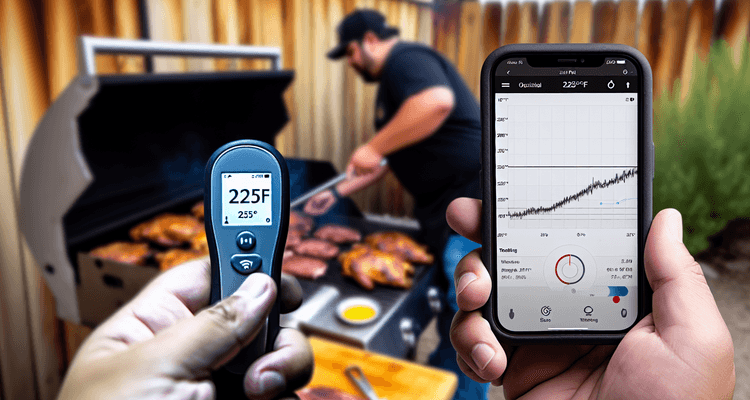
A BBQ temperature controller transforms smoking from a demanding, attention-intensive process into a relaxed experience that delivers consistently exceptional results. With automatic temperature control taking over the tedious work of monitoring and adjustments, you’re free to enjoy the experience. Whether you choose the exceptional value of the INKBIRD ISC-027BW, the kamado-optimized precision of the Flame Boss 500 Kamado, or the universal adaptability of the Flame Boss 500 Universal, you’re investing in better BBQ and more free time.
When selecting your controller, prioritize compatibility with your specific cooker, consider whether WiFi connectivity matches your monitoring needs, and choose a probe configuration that handles your typical cooking scenarios. Budget-conscious buyers will find that even entry-level controllers like the BBQ Guru CyberQ WiFi deliver reliable automated temperature control, while premium options offer variable-speed fans and advanced features that provide the tightest possible temperature stability.
The best temperature controller is the one that fits your cooker, matches your monitoring preferences, and sits within your budget. Any of the models in this guide will dramatically improve your smoking results, free you from constant temperature monitoring, and let you focus on perfecting your rubs, sauces, and technique while the controller handles the tedious work of maintaining steady temperatures. Whether you’re smoking your first brisket or your hundredth, automated temperature control elevates every cook and makes competition-quality results accessible to backyard enthusiasts. For more essential BBQ tools and accessories, check out our guide to the best smoker thermometers to complement your temperature controller setup.
Contents







